 |
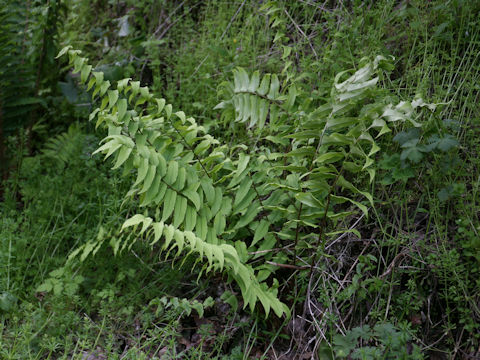

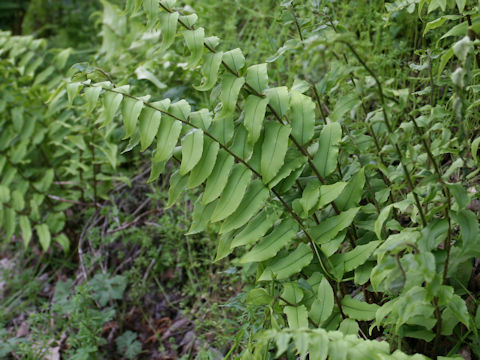

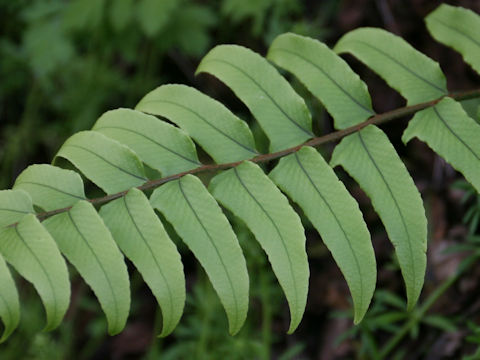

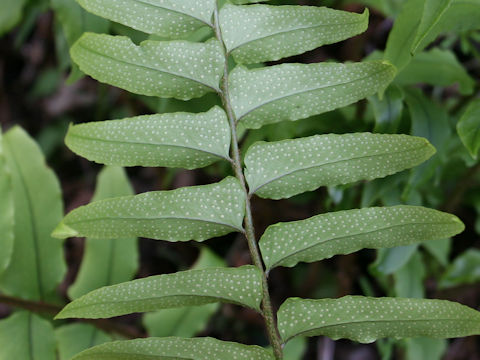

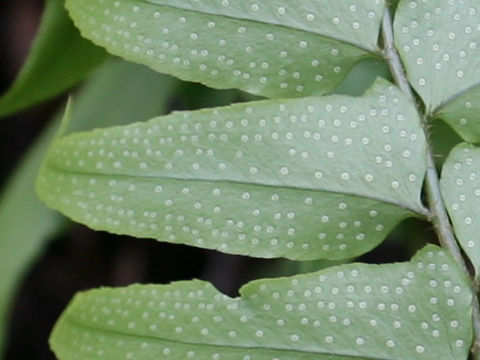

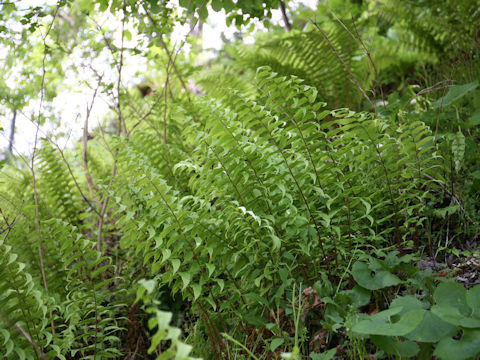

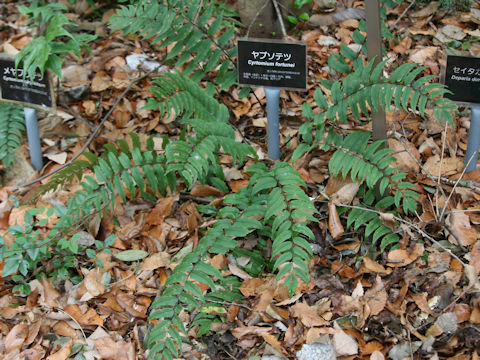

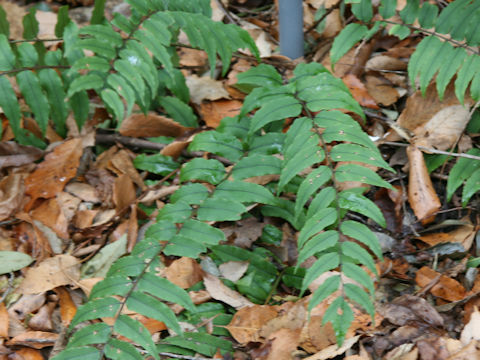

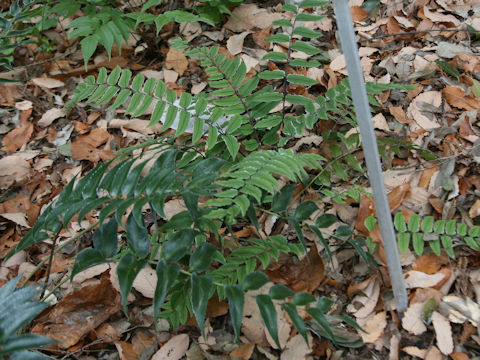

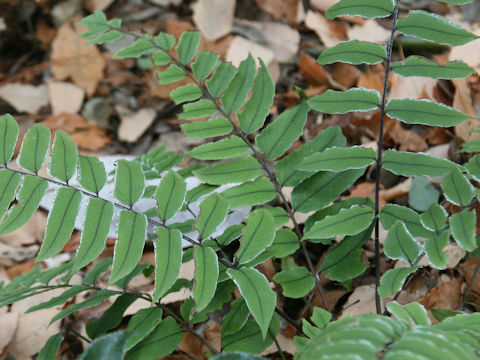

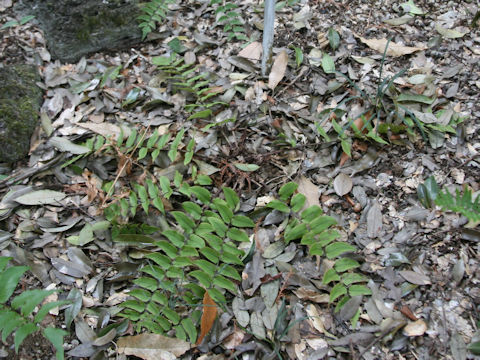

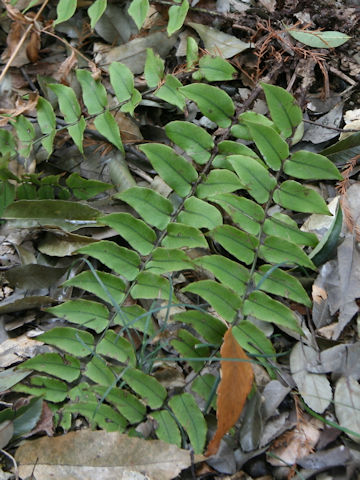

|

|
íªÌ{B©çlAãBɪzµÄ¢Ü·B½n©çRnÌÑ°âÑɶ¦A³ÍTO`VOZ`ÉÈèÜ·BªsÍZÎãµAT`WÂÌtðp¶µÜ·Bt¿ÌîÉÍA·È~óâj`ÅÃF©çFÌØЪ«ܷBtgÍPHó¡tB¤HÐÍPT`QTΫAîÍ~`©çØ`ŨªÚ§¿Ü¹ñB\[XÍ~`ÅAHÐSÊÉUݵAïÍDFÅ·B
|

|
IV_Èu\ec®ÌíÎV_ÞÅAw¼Í Cyrtomium fortunei var. fortuneiBp¼Í èܹñB
|

|
The "Yabu-sotetsu" (Cyrtomium fortunei var. fortunei) belongs to the family Dryopteridaceae. It is an evergreen fern that is distributed from Honshu to Shikoku and Kyushu in Japan. This fern grows from flatlands to mountainous forest floors and edges, and can reach 50-70 cm in height. The rhizomes are short and slanted, crowding 5-8 leaves. The base of the petiole is oblong lanceolate with dark brown to black scales. The leaf blade is single-pinnate compound. There are 15 to 25 pairs of side pinnae, and the base is round to cut and the earlobe is inconspicuous. The sorus is circular, scattered all over the pinna, and the indusia are grayish white.
|

|
[ãEP`T] {é§åäs¾æHÛ·òÉÄA2021N0511úBeB
[U`POEº] ïé§ÂÎsuÂÎÀ±A¨vÉÄA2025N0125úBeB
|











